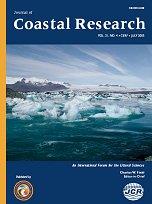The physical processes in a number of Canadian fjords have received considerable study over the years. The fjords tend to be tidally energetic and can be highly stratified because of freshwater runoff. Observations from instruments such as cyclesondes (profiling current meters), acoustic Doppler current profilers (ADCPs) and S4s (InterOcean vector averaging current meters) have yielded observations of the circulation over almost the entire water column. Combined with simulations from analytic and numerical models, these observations have allowed the partition of tidal energy in the fjords to be examined in some detail. The net tidal energy flux into a fjord (i.e., the rate at which energy is removed from the surface tide), and the cause of the energy flux, can vary significantly between fjords. The energy can be removed from the surface tide by boundary friction or by the generation of internal motions (i.e., the internal tide, hydraulic jumps etc.). In this paper the partition of tidal energy in five Canadian fjords and the techniques used to determine the partition will be reviewed. The analysis techniques will be described in some detail and, where possible, the relationship between the various analysis techniques will be pointed out. The fjords discussed are Observatory Inlet, Knight Inlet, Burrard Inlet/Indian Arm, Sechelt Inlet and the Saguenay Fjord.
How to translate text using browser tools
1 July 2005
Review of the Partition of Tidal Energy in Five Canadian Fjords
Michael W. Stacey
ACCESS THE FULL ARTICLE

Journal of Coastal Research
Vol. 2005 • No. 214
July 2005
Vol. 2005 • No. 214
July 2005
Canada
coastal oceanography
internal tides
tidal inlets
tides




